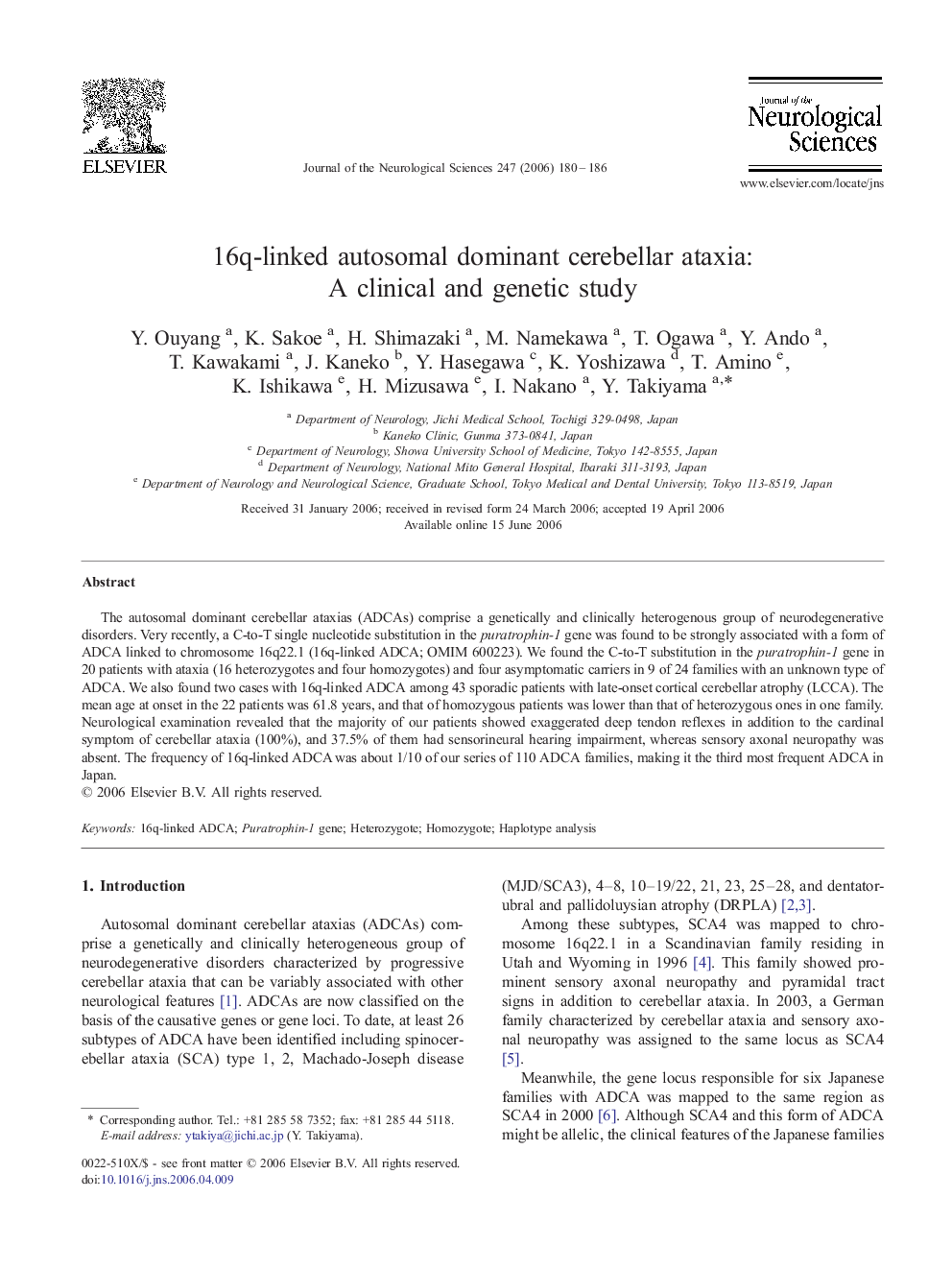| Article ID | Journal | Published Year | Pages | File Type |
|---|---|---|---|---|
| 1916740 | Journal of the Neurological Sciences | 2006 | 7 Pages |
The autosomal dominant cerebellar ataxias (ADCAs) comprise a genetically and clinically heterogenous group of neurodegenerative disorders. Very recently, a C-to-T single nucleotide substitution in the puratrophin-1 gene was found to be strongly associated with a form of ADCA linked to chromosome 16q22.1 (16q-linked ADCA; OMIM 600223). We found the C-to-T substitution in the puratrophin-1 gene in 20 patients with ataxia (16 heterozygotes and four homozygotes) and four asymptomatic carriers in 9 of 24 families with an unknown type of ADCA. We also found two cases with 16q-linked ADCA among 43 sporadic patients with late-onset cortical cerebellar atrophy (LCCA). The mean age at onset in the 22 patients was 61.8 years, and that of homozygous patients was lower than that of heterozygous ones in one family. Neurological examination revealed that the majority of our patients showed exaggerated deep tendon reflexes in addition to the cardinal symptom of cerebellar ataxia (100%), and 37.5% of them had sensorineural hearing impairment, whereas sensory axonal neuropathy was absent. The frequency of 16q-linked ADCA was about 1/10 of our series of 110 ADCA families, making it the third most frequent ADCA in Japan.
